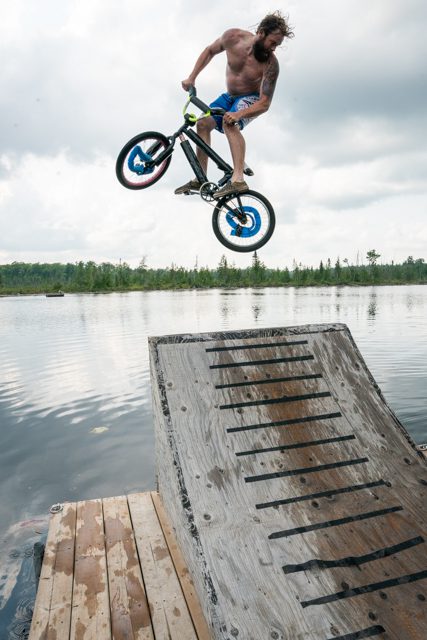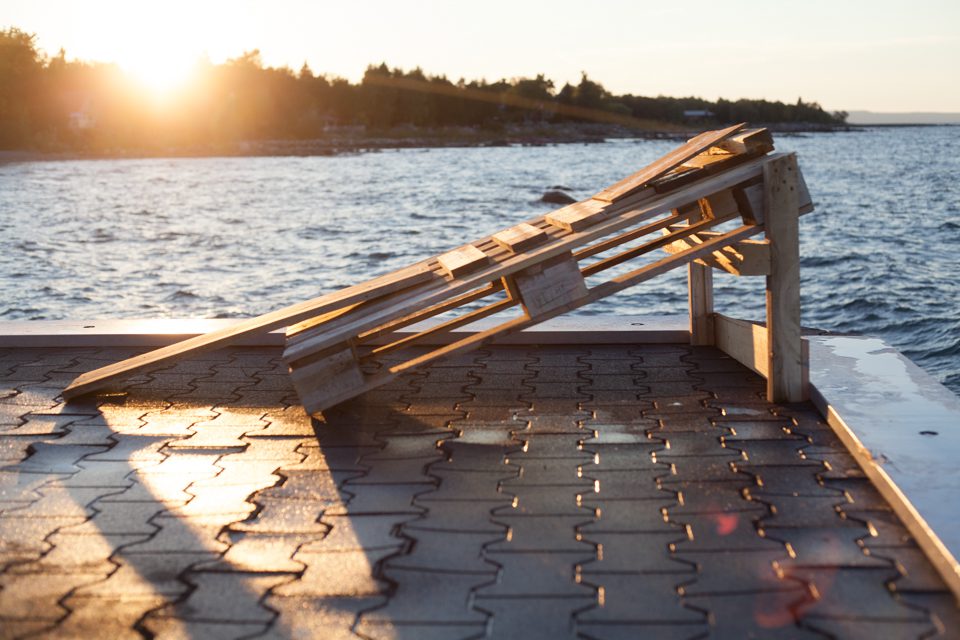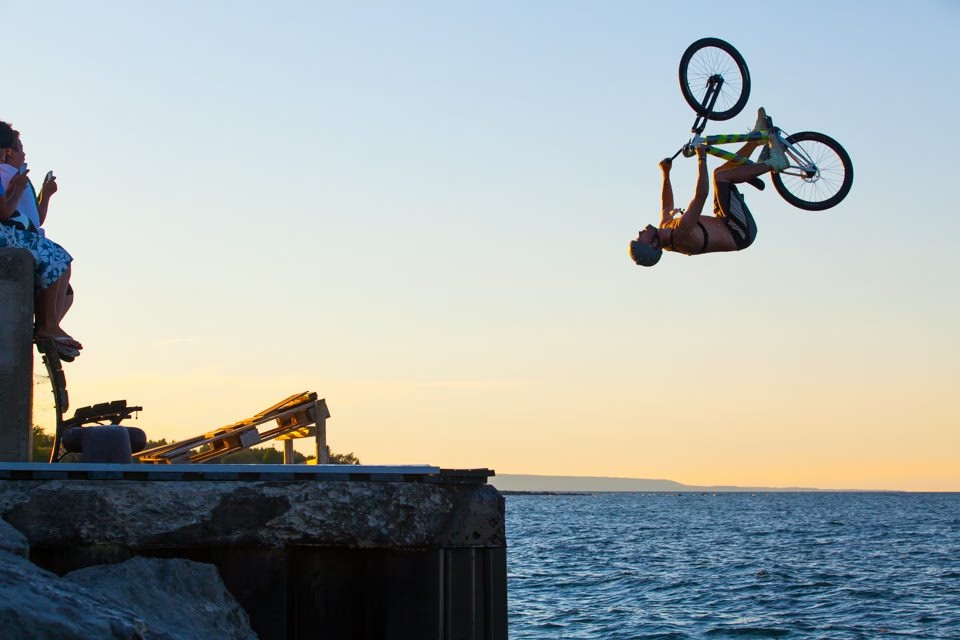Jumping your bike into the lake is simply the best. The kind of fun that keeps you smiling for days. If you think jumping into a foam pit is good a good time, then lake jumping is right up your roll-in. You can try tricks, show off, or just cool down after a long ride. The water cushions the landing and adds an instant grin factor for all involved.
It’s unpredictable, social and endlessly entertaining. Watching friends fly off the ramp, celebrating perfect splashes and laughing at bellyflops There’s nothing quite like it.
Choosing your bike
You may want to consider which bike you’re jumping into the lake. It’s going to get wet. If you’re worried about wrecking it, maybe pick a bike you don’t care about too much. But if you’re happy launching your regular ride, be ready to tear it down, dry it out, and lube it afterwards. It’s worth the effort for the thrill.

Tricks, floats and bike prep
There’s a whole world of experimentation here. For years, we attached milk jugs to handlebars to help our bikes float, but oversized inner tubes, pool noodles, or even a strapped-on lifejacket can work too. Depending on your tire volume, your bike might float naturally. Bigger mountain bikes are more buoyant, but always check first. No one wants to watch a bike sink beyond reach.
Remember: with enough air and enough speed, hitting thewater can still hurt. Slapping your face on it seriously smarts. Helmets are probably not a bad idea. That said, it’s probably worth wearing a life jacket too. And don’t forget your feet. Barefoot might look cool, but slipping a pedal without shoes is nasty. I always wear an old pair of riding shoes. You’ll stay planted, avoid ripping your feet on pedals and have one less thing to worry about midair. Yes, you’ll end up with a pair of wet riding shoes but your feet will thank you.

Ramp, depth and a spotter
The jump itself matters. Build it half-decent and test it. Obviously make sure the water is deep enough—at least 2–3 meters—and free of rocks or hidden hazards. It’s nice to have someone on shore with a rope ready to help pull you in. Their job is just as important as yours: safety, reassurance and an extra set of eyes.
Start small, check your trajector and gradually push it.
Splash, laugh, repeat
When done right, a lake jump is one of the best ways to have fun on…
Click Here to Read the Full Original Article at Canadian Cycling Magazine…

